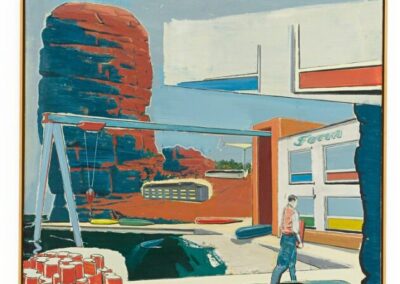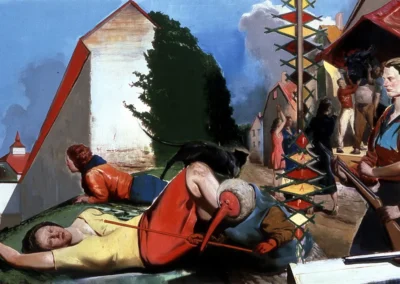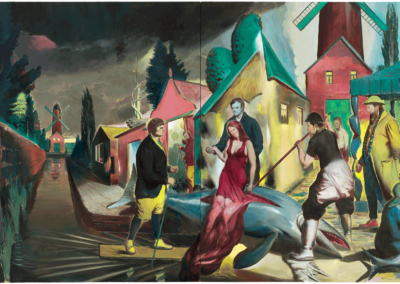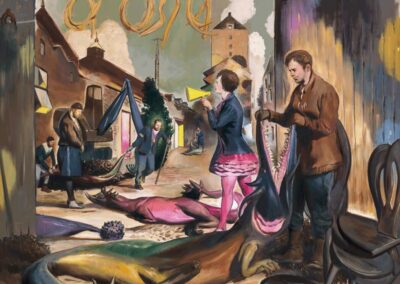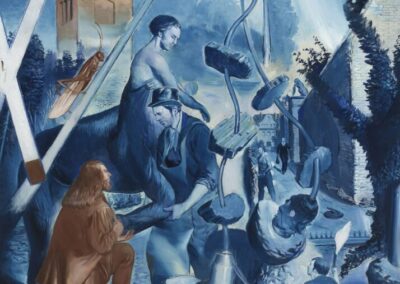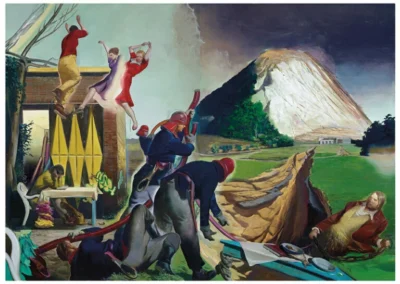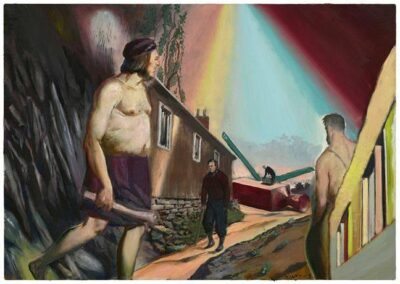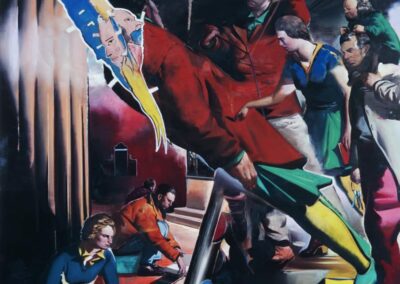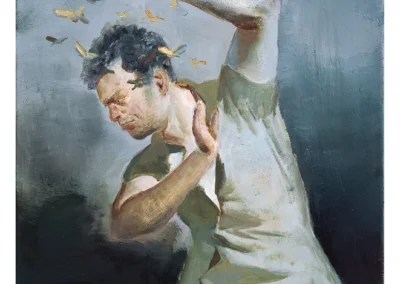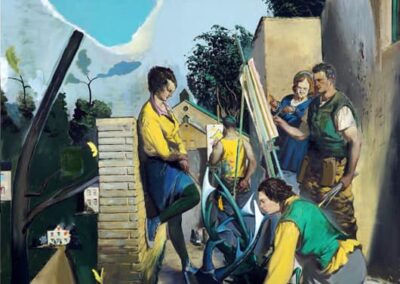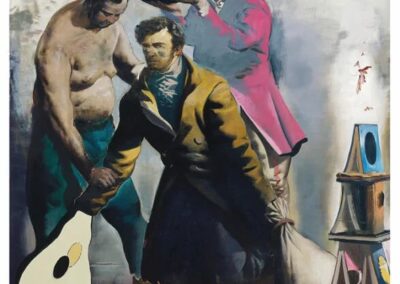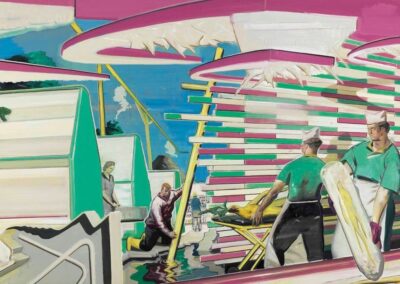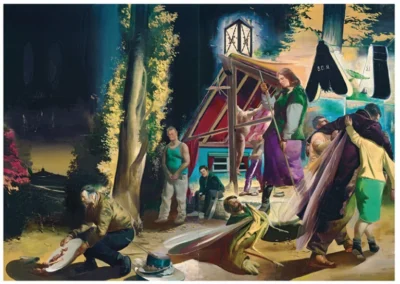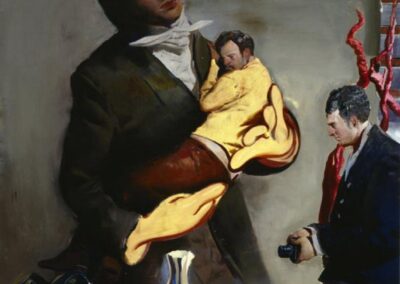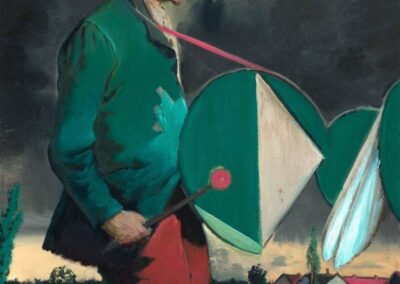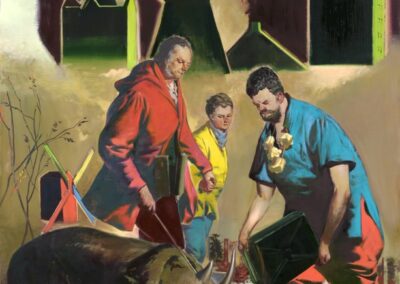The next Artist You Need To Know is Neo Rauch.
Rauch is a German artist whose paintings have a surrealist quality (though his work is more nuanced than that) that blend his own personal history with larger historical issues that often touch upon what it means to be German in the periods of German reunification and Post Cold War Europe (especially issues around industrialization and alienation), if not the world. Socialist Realism often influences his artwork, as well as the artwork of artists like Giorgio de Chirico and René Magritte.
From David Zwirner Gallery : “Widely celebrated as one of the most influential figurative painters working today, Neo Rauch is known for richly colored and elaborate paintings that contain a repertoire of invented characters, settings, objects, and motifs. At once realistic and familiar, enigmatic and inscrutable, his paintings often hint at broader narratives and histories—seemingly reconnecting with the artistic traditions of realism—yet they are dreamlike and frequently contain disparate and overlapping spaces and forms.”
“For me, painting means the continuation of dreaming by other means.”
He was born in 1960 in Leipzig (when it was still East Germany during the Cold War). His parents both studied at the Hochschule für Grafik und Buchkunst Leipzig (Leipzig Academy of Visual Arts) but tragically died in a train accident when Rauch was only four weeks old. Raised by his grandparents in Aschersleben, Rauch studied painting at the Hochschule für Grafik und Buchkunst Leipzig and then was Masterstudent with Professor Arno Rink (1981–1986) and with Professor Bernhard Heisig (1986–1990). When the GDR (East Germany) was reunified with West Germany, Rauch would continue to work as an assistant to Rink but also with Sighard Gille at the Leipziger Akademie (1993 to 1998).
From August 2005 until February 2009, Rauch was a professor at the Leipziger Hochschule für Grafik und Buchkunst.
Art historian Charlotte Mullins in responding to Rauch’s work speaks about how the work is enigmatic and resists an easy interpretation : “Architectural elements peter out; men in uniform from throughout history intimidate men and women from other centuries; great struggles occur but their reason is never apparent; styles change at a whim.”
“With high-contrast palettes featuring vibrant, acidic tones and darker, more ominous hues, Neo Rauch paints alternate universes where anxiety and unpredictability prevail….The artist often renders ambiguous human characters, scenes of labor, strange symbols, and hybrid creatures—his compositions always defy simple narrative resolution. Rauch grew up in East Germany, and his off-kilter landscapes suggest the unease of life under the shadow of the Cold War.” (from here)
“When I paint, I don’t think, and instead I surrender myself completely to my feelings and to what the canvas demands of me. To me, this means bringing order, not to a mental space, but to the space of the unconscious.”
Rauch is the subject of the 2016 film Neo Rauch: Comrades and Companions, directed by Nicola Graef. That can be watched here, with subtitles.
He currently lives in Markkleeberg near Leipzig, Germany : Rauch has enjoyed solo shows at the Metropolitan Museum of Art, the Des Moines Art Center, the Albertina in Vienna, the Musée d’Art Contemporain de Montréal, The Museum of Modern Art (NYC), The Toledo Museum of Art, Carnegie Museum of Art (Pittsburgh), Denver Art Museum, National Gallery of Canada, Neuberger Neuman Collection (NYC), San Francisco Museum of Modern Art, Solomon R. Guggenheim Museum (NYC), Stedelijk Museum (Amsterdam) and the BOZAR Centre for Fine Arts in Brussels. In 2001, he exhibited at the Venice Biennale.
A full CV of Rauch’s accomplishments can be seen here. Much more about his life and work can be enjoyed here.


